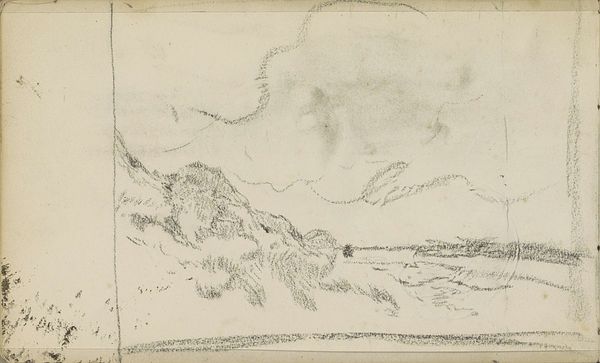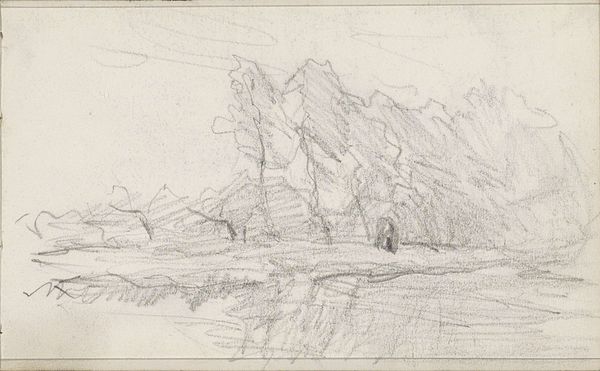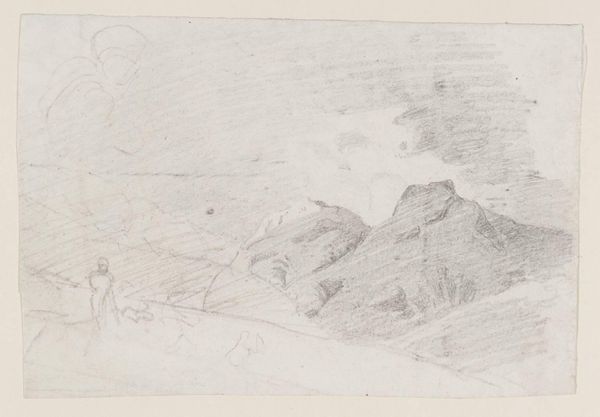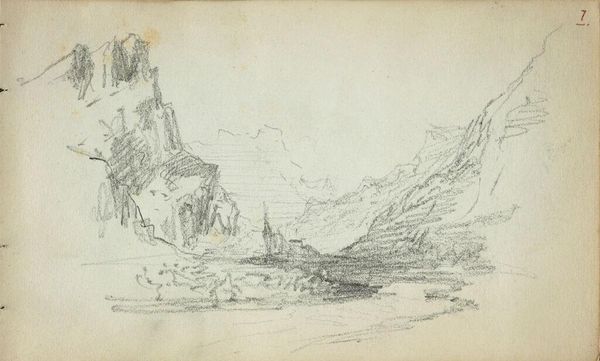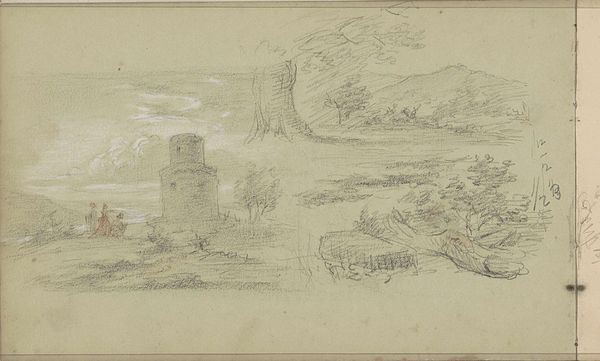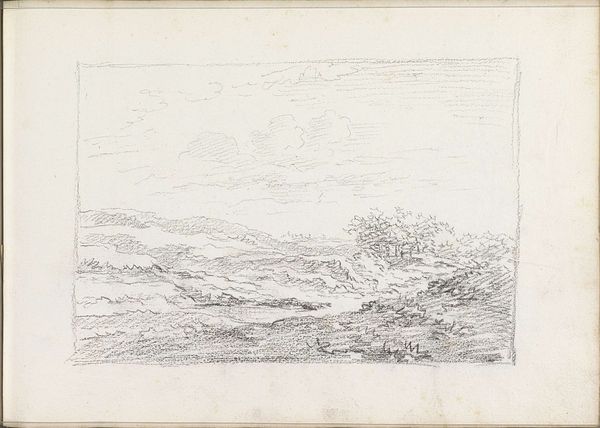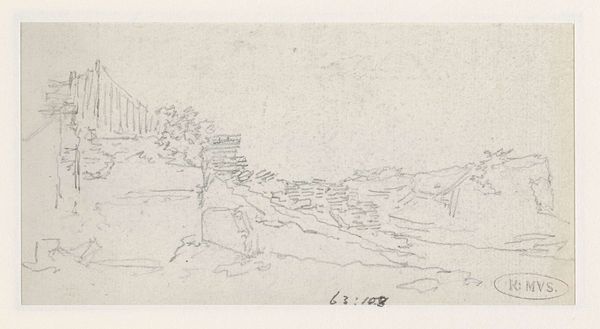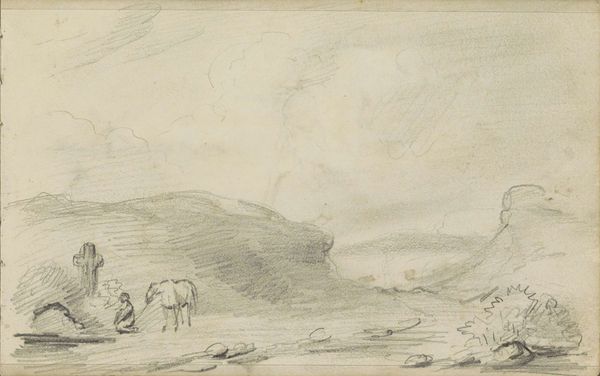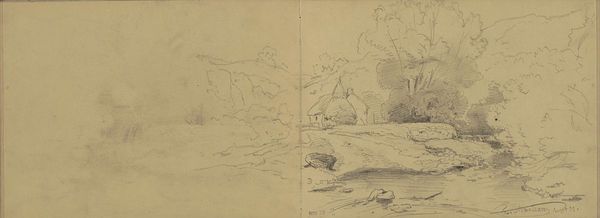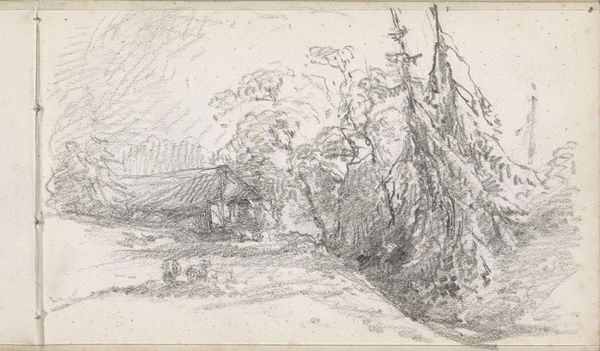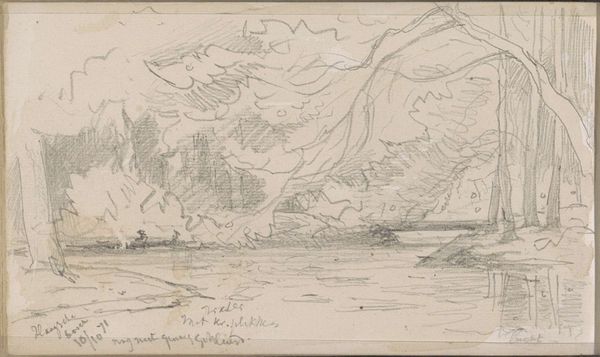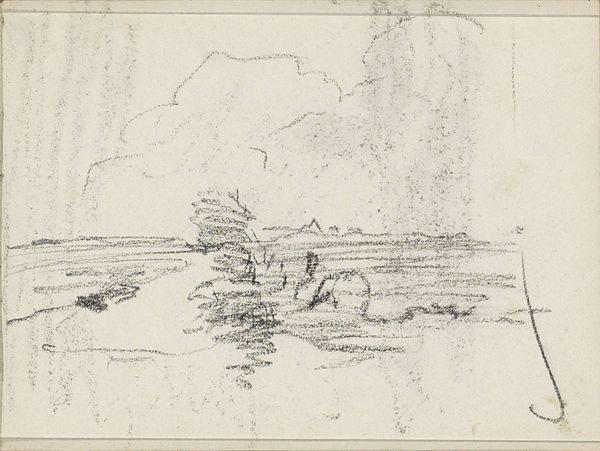
Dimensions: height 184 mm, width 282 mm
Copyright: Rijks Museum: Open Domain
Curator: Before us, we have Willem Cornelis Rip's "Mountain Landscape with Travelers," a pencil drawing dating back to 1874. Editor: My immediate sense is one of gentle melancholy. The stark pencil lines, the vastness of the mountains contrasted with the tiny figures... It feels like a meditation on the human condition against the backdrop of an indifferent natural world. Curator: Yes, that feeling resonates. It pulls from a visual tradition in Romanticism: the awe-inspiring power of nature made immediate by Rip’s use of a seemingly commonplace medium. The traveler becomes a cipher for the individual's journey through life, set against this monumental, eternal landscape. We recognize motifs common across centuries. Editor: Absolutely, and it's crucial to view it through a critical lens, considering whose journeys are valorized, and whose are erased. Who has access to this sublime landscape and the time for such journeys of contemplation, and what histories of colonial exploitation may lie behind the very possibility of this seemingly innocent scene. The mountains could carry a different significance when thought of through Indigenous relations to place. Curator: A worthwhile interrogation. Even Rip's medium—pencil on paper—speaks volumes about access. This drawing possesses an intimacy—a study done with minimal materials that opens to larger ideas. Its stark quality feels revealing, doesn't it? A quiet revelation. Editor: Indeed, there is a stark vulnerability to the medium. The fragility of the pencil line highlights impermanence. It invites a critique on who is given the ability to draw those lines. This fragility perhaps prompts reflection on our contemporary climate crises, and humanity’s devastating role in shaping those mountainscapes across time. Curator: Thinking about continuity and devastation at once. So very fitting. Editor: These sorts of conversations, bringing historical understandings into contemporary spaces, makes for profound new reflections. Curator: Absolutely, the dialogue brings forth something new in looking to something old.
Comments
No comments
Be the first to comment and join the conversation on the ultimate creative platform.
